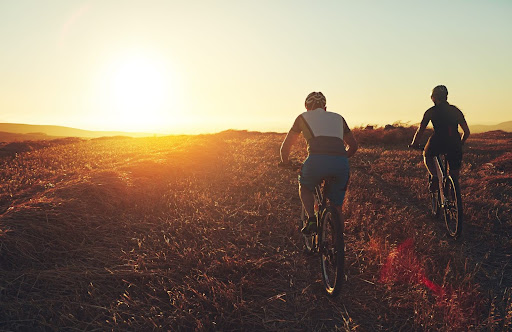Cycle touring is a fantastic way to see the world, combining the joy of cycling with the adventure of long-distance travel. Whether you’re planning a weekend getaway or a multi-month expedition, this guide will help you prepare for the journey ahead.
Choosing the Right Bike
The foundation of any successful bike tour is a reliable and comfortable bicycle. When it comes to selecting the perfect bike for your adventure, it’s essential to take into account several important factors to ensure a smooth and enjoyable journey:
- Type of Bike: Touring bikes are specifically designed for long-distance travel, offering the durability needed to withstand rough roads, the comfort necessary for long hours of riding, and the ability to carry heavy loads with ease. Additionally, they often come with features like multiple mounting points for racks and water bottles.
- Fit and Comfort: A bike that fits you well is crucial to avoid discomfort and prevent injuries during your tour. This includes ensuring the frame size is appropriate for your height, the saddle is at the right height, and the handlebars are within comfortable reach. It might also be beneficial to get a professional bike fitting to make sure all adjustments are optimal for your body type and riding style.
- Accessories: Investing in essential accessories can significantly enhance your touring experience. Some must-have items include panniers for carrying your gear, a sturdy rack to support those panniers, and a comfortable saddle that will keep you pain-free even on long rides.
Planning Your Route
A well-planned route can make your bike tour more enjoyable and less stressful, allowing you to fully immerse yourself in the journey without constant worry. Here are some detailed tips to help you plan effectively:
- Research: Use a combination of maps, guidebooks, and online resources to plan your route in detail. Look for recommendations from other cyclists who have done similar tours and read reviews of various paths and roads.
- Terrain: Carefully consider the terrain you’ll be cycling on. Choose routes that match your fitness level to avoid overexertion. If you are a beginner, opt for flatter terrain or well-paved paths. For more experienced cyclists, challenging routes with hills and varied landscapes might be more appealing.
Packing Essentials
Packing the right gear is crucial for a successful bike tour, as it ensures you are prepared for various situations and conditions. Here’s a detailed checklist of essentials you should consider:
- Clothing: Pack moisture-wicking and quick-drying clothing to stay comfortable. Don’t forget a rain jacket for unexpected showers and warm layers for cooler temperatures. Consider including a hat, gloves, and extra socks to cover all weather possibilities.
- Food and Water: Carry enough food and water to sustain you throughout the day. Opt for high-energy snacks like nuts, dried fruits, and energy bars. Plan your route to include resupply points where you can top up on water and grab a meal. Bringing a water filter or purification tablets can be a lifesaver in remote areas.
Staying Safe on the Road
- Visibility: Always wear bright, reflective clothing to make sure you are easily seen by other road users. Additionally, use lights and reflectors on your bike, especially during low light conditions or at night, to further increase your visibility and prevent accidents.
- Traffic Rules: It’s essential to obey all traffic laws as if you were driving a car. This includes stopping at red lights and stop signs, using hand signals when turning, and riding with the flow of traffic. Adopting a defensive riding style, where you anticipate potential hazards and maintain a safe distance from vehicles, can significantly reduce your risk of accidents.
- First Aid: Carrying a basic first aid kit is a small but crucial step in being prepared for emergencies. This kit should include bandages, antiseptic wipes, pain relievers, and any personal medications you might need.
Conclusion
Cycle touring is a rewarding way to travel, offering a unique perspective and a sense of accomplishment. By exploring new places at your own pace, you get to immerse yourself in the local culture and scenery in a way that is not possible with other forms of travel. The physical challenge and the need for strategic planning add to the overall sense of achievement. With the right preparation, including thorough route planning, proper equipment, and a positive mindset, your long-distance biking adventure will be an unforgettable experience.
Written by Niall O’Riordan UBS
